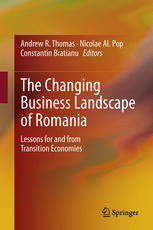

Most ebook files are in PDF format, so you can easily read them using various software such as Foxit Reader or directly on the Google Chrome browser.
Some ebook files are released by publishers in other formats such as .awz, .mobi, .epub, .fb2, etc. You may need to install specific software to read these formats on mobile/PC, such as Calibre.
Please read the tutorial at this link: https://ebookbell.com/faq
We offer FREE conversion to the popular formats you request; however, this may take some time. Therefore, right after payment, please email us, and we will try to provide the service as quickly as possible.
For some exceptional file formats or broken links (if any), please refrain from opening any disputes. Instead, email us first, and we will try to assist within a maximum of 6 hours.
EbookBell Team

4.7
96 reviewsRomania stands at the crossroads of Europe, Asia, and the Middle East. Since 1990, when the country experienced the bloodiest revolution of all of the Warsaw Pact members, Romania has gone through withering change. While the formal transition from a totalitarian, communist state was completed in 2007 with Romania’s accession into the European Union, the adaptation of the nation’s people and business climate to a market-based economy is a daily occurrence.
In the 2000’s, in the lead up to EU accession, Romania was one of the largest recipients of Foreign Direct Investment in the world. While multinational corporations poured in hundreds of billions of dollars, there was also a restructuring of the way business was conducted. Western systems of management and organization—foreign to most Romanian academics and business people—almost overnight transformed the way the marketplace was perceived.
Romania’s entrepreneurs were quick to adapt to the new ways, leveraging new opportunities in the environment. Fortunes were made. Multinationals also burgeoned in Romania. Companies like Microsoft, General Electric, Timken, Kraft, P&G, Renault and dozens of others successfully took advantage of the possibilities created by a relatively well-educated population that was moving into the middle class.
For the most part, however, researchers and scholars were caught off guard by the quickening pace of business change in Romania. Only until very recently has the academic community at large been able to wade through the murkiness and begin to see what the new landscape looks like.
It is the purpose of this edited volume, which includes the work of some of Romania’s finest business scholars, to provide even greater clarity to the current and future scene. Moreover, the experience in Romania helps shed light on the dynamics of economic and business transition throughout Eastern Europe, the Middle East, and other emerging regions, with implications for practice, policymaking, and research.